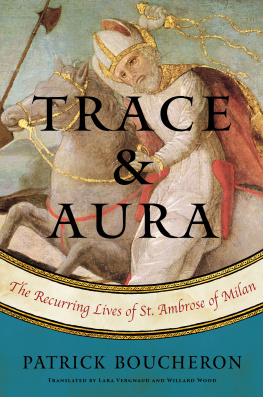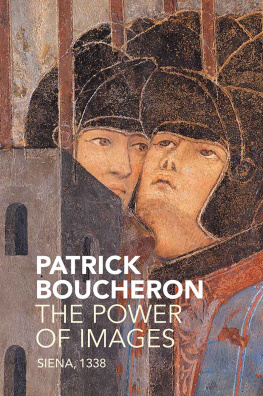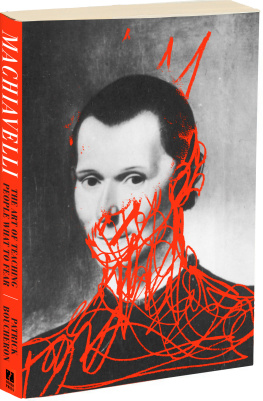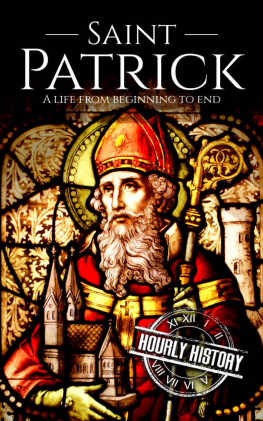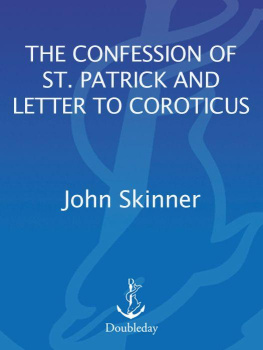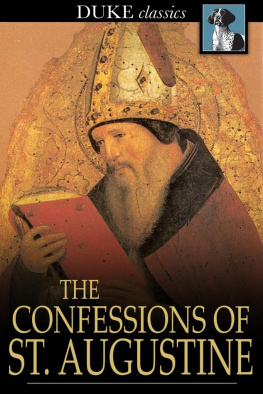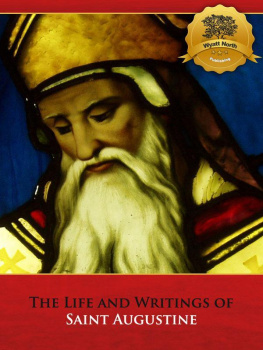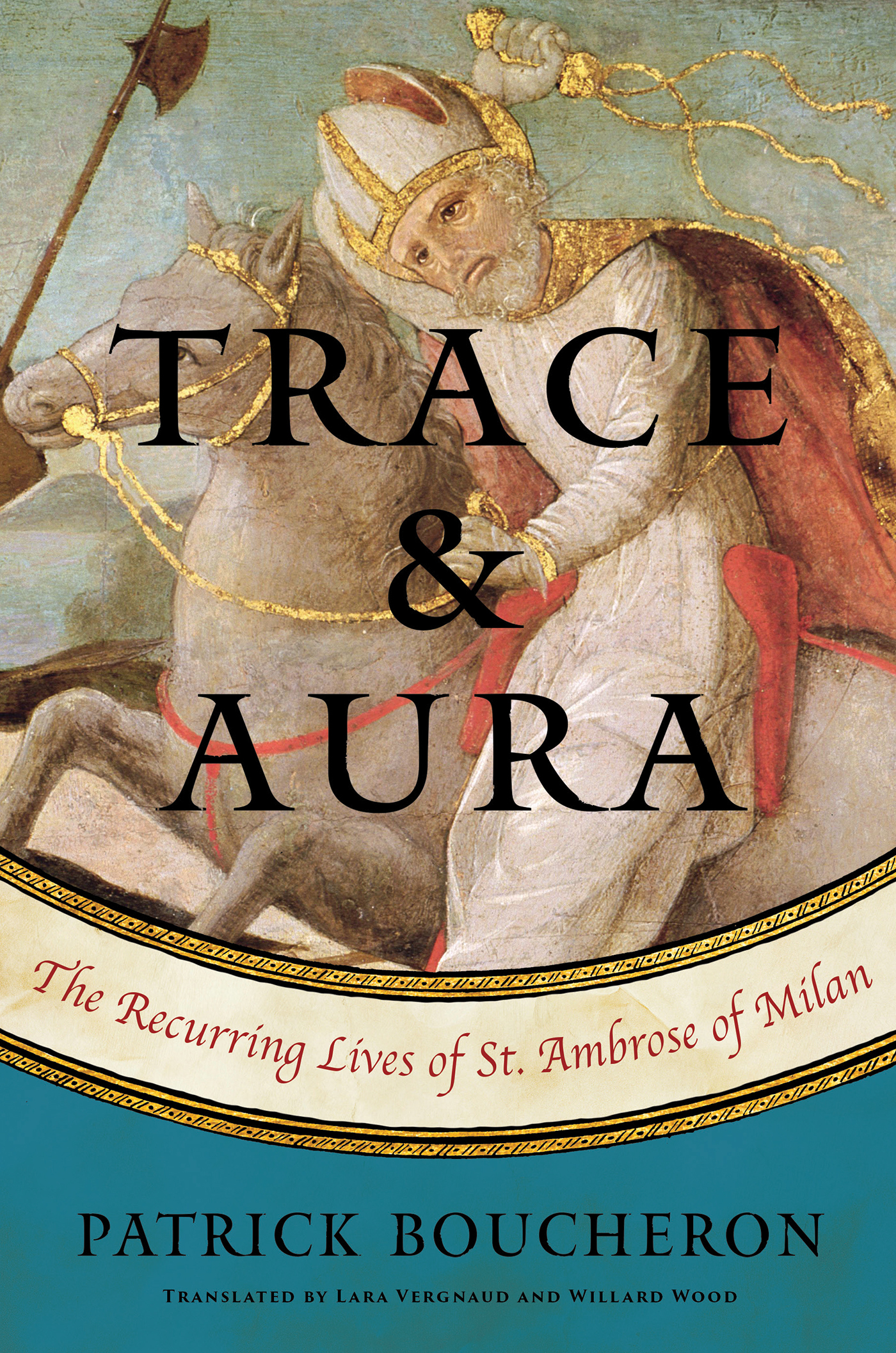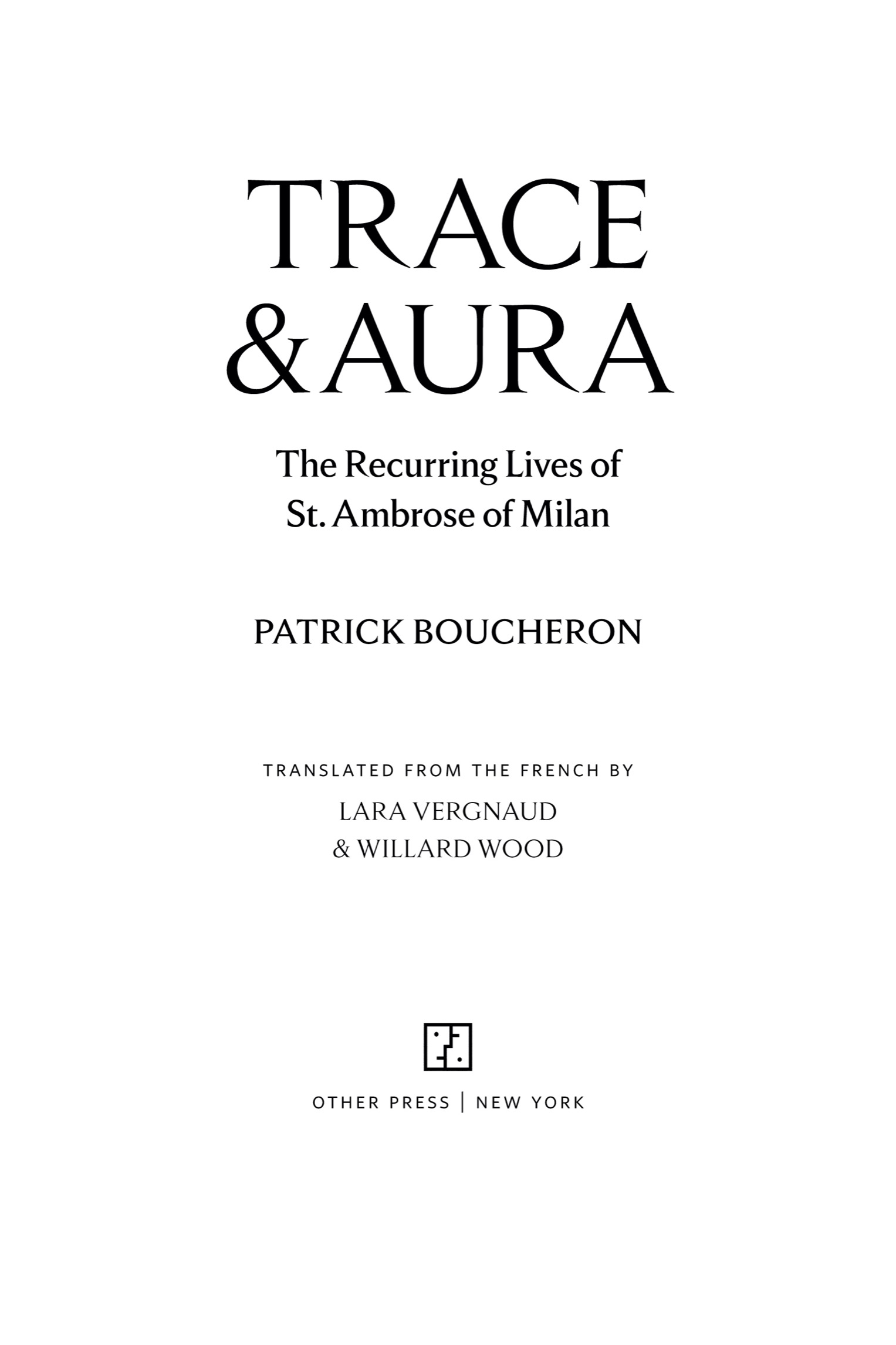Contents
Landmarks
Print Page List
ALSO BY PATRICK BOUCHERON
France in the World
(editor)
Machiavelli:
The Art of Teaching People What to Fear
The Power of Images:
Siena, 1338
Originally published in French as La trace et laura: Vies posthumes dAmbroise de Milan ( IV e XVI e sicle) in 2019 by ditions du Seuil, Paris.
Copyright ditions du Seuil, 2019
English translation copyright Lara Vergnaud and Willard Wood, 2022
Juan Jos Saer epigraph from The Witness translated by Margaret Jull Costa (London: Serpents Tail, 2009).
Production editor: Yvonne E. Crdenas
All rights reserved. No part of this publication may be reproduced or transmitted in any form or by any means, electronic or mechanical, including photocopying, recording, or by any information storage and retrieval system, without written permission from Other Press LLC, except in the case of brief quotations in reviews for inclusion in a magazine, newspaper, or broadcast. For information write to Other Press LLC, 267 Fifth Avenue, 6th Floor, New York, NY 10016. Or visit our Web site: www.otherpress.com
The Library of Congress has cataloged the printed edition as follows:
Names: Boucheron, Patrick, author. | Wood, Willard, translator. | Vergnaud, Lara, translator.
Title: Trace and aura : the recurring lives of St. Ambrose of Milan / Patrick Boucheron; translated from the French by Lara Vergnaud and Willard Wood.
Other titles: Trace et laura. English
Description: New York : Other Press, [2022] | Originally published in French as La trace et laura : vies posthumes dAmbroise de Milan ( IV e XVI e sicle) in 2019 by ditions du Seuil, Paris. | Includes bibliographical references and index.
Identifiers: LCCN 2021031270 (print) | LCCN 2021031271 (ebook) | ISBN 9781635420067 (hardcover) | ISBN 9781635420074 (ebook)
Subjects: LCSH : Ambrose, Saint, Bishop of Milan, 397 Influence. | Bishops ItalyMilan Biography. | Church history Primitive and early church, ca. 30600. | Christianity and politics Italy Milan History To 1500.
Classification: LCC BR 1720. A 5 B 6813 2022 (print) | LCC BR 1720. A 5 (ebook) | DDC 270.2092 [B] dc23
LC record available at https://lccn.loc.gov/2021031270
LC ebook record available at https://lccn.loc.gov/2021031271
Ebook ISBN9781635420074
a_prh_5.8.0_138931606_c0_r0
Non vacant tempora nec otiose volvuntur per sensus nostros: faciunt in animo mira opera.
AUGUSTINE , Confessions
Theyre gonna find him spewed all over Milan in bits and pieces, jigsaw style. Anybody pushes me too far, I dont correct them anymore. I dynamite them, atomize them, ventilate them.
after MICHEL AUDIARD , Monsieur Gangster
In the depths of memory, the sky. Remains.
Remains of light we dont know what to do with.
HENRI MICHAUX , Coups darrt
But it is not easy. These assiduous memories cannot always be grasped; at times they seem clear, austere, precise, all of a piece; but as soon as I make a move to take hold of them and fix them, they start to unfold and expand, and details which, seen from a distance, had been obscured by the whole, then multiply, proliferate and take on an importance they hitherto lacked. There comes a point when I grow dizzy and find it difficult to establish a hierarchy amongst all these presences competing for my attention.
JUAN JOS SAER , The Witness
CONTENTS
To access the bibliography, please visit https://otherpress.com/ambrose/
PROLOGUE
That Which Returns to the Same Place
A child cries out.
In Milan, in 374, a child cries out his name.
Ambrose hears it. He understands where it comes from, this cry that cuts through the crowd, shaking it, establishing it. For from the moment the child cried out Ambrosius episcopus, the small, unruly flock of Milans Christians became a people, his people, and Ambrose their bishop. A few seconds earlier, it was still just a crowd agitated by a thousand quarrels that, in the greatest of turmoil, did not know to which religious leader they should turn. It sufficed for a cry to ring out, it sufficed for the child to say the name of this young patrician, Aurelius Ambrosius Ambrose of the gens Aurelia, a giant of Rome, born to govern and suddenly all the Christians of Milan torn between rival factions and opposing faiths agreed on his name alone in shocking and incredible unanimity.
But no, he doesnt want this. They say that on this day in 374, Ambrose slipped away, they say that he resorted to ruses to discourage his followers. He brought prostitutes into his home, he tortured a man under the guise of justice, and, because making blood flow and succumbing to sex wasnt enough to make it clear that he was rejecting the weight of the ecclesiastical charge being foisted upon him and since nobody had understood that his first maneuver, his decision to embrace the profession of philosopher, was also a provocation he fled.
For centuries, every detail of this episode of the Vita Ambrosii written by Ambroses secretary and biographer Paulinus of Milan has been painstakingly scrutinized, passionately questioned, and tirelessly commented on. It contains one of the most influential hagiographic themes in political life: a show of renouncing power as the foundation of power. But before coming to this episode in our turn, and since we are on the brink of a book of history, but one that also intends to penetrate into the thickness of time, before leaping in, fully equipped with all the apparatuses that such expeditions of learning demand, lets paddle for a few more moments in the shallows, skimming the surface of the fiction recounted by Paulinus heres what comes next.
Wanting to escape his fate, Ambrose decided to flee. One night, in secret, he left the city. He was alone and trying to reach Pavia, called Ticinum in antiquity after the river crossing it, the Ticino. But though he thought he was walking toward his destination, they found him in the morning at the so-called Roman Gate of the city of MilanFor God, who was setting up the bulwark of his Catholic Churchprevented his flight. The people took him in safe custody, waiting for the prefect Probus and the emperor Valentinian, the clement, to confirm the election of the new bishop. Ambrose would not get away.
Is Paulinus of Milan writing an account of a failed escape or is he describing the results of disorientation? Ambrose doesnt realize that his steps are taking him back to his starting point, undoubtedly because he doesnt want to believe that every road leads to the porta Romana, the equivalent of Pariss voie triomphale in the imperial capital that was Milan in the fourth century. But all paths converge: Ambrose is unable to leave the city. He is obstinately brought back. By whom? God, of course. So here we have the history of a man who cannot escape the force of his name or the place that force assigns him. Ambrose will be bishop of Milan, Milan will become Ambroses city, and the people of Milan, still today, will call themselves Ambrosians.
For nearly fifteen years, I have obsessively explored the history of the memorative gravitation of a name around a city, of a city around a name, murmuring lines from Baudelaire: I have more memories than if Id lived a thousand years. What a strange idea, when you think about it, to take an interest in these old refrains and, more seriously, to pretend they could be of interest to anyone else. Yet heres the thing: you can think, or dream really, all you want, but we dont choose the ghosts that haunt us. Menacing or mocking, they remain the faithful companions of our obsessions. And so, here, once again, we will read a ghost story for consenting adults.

